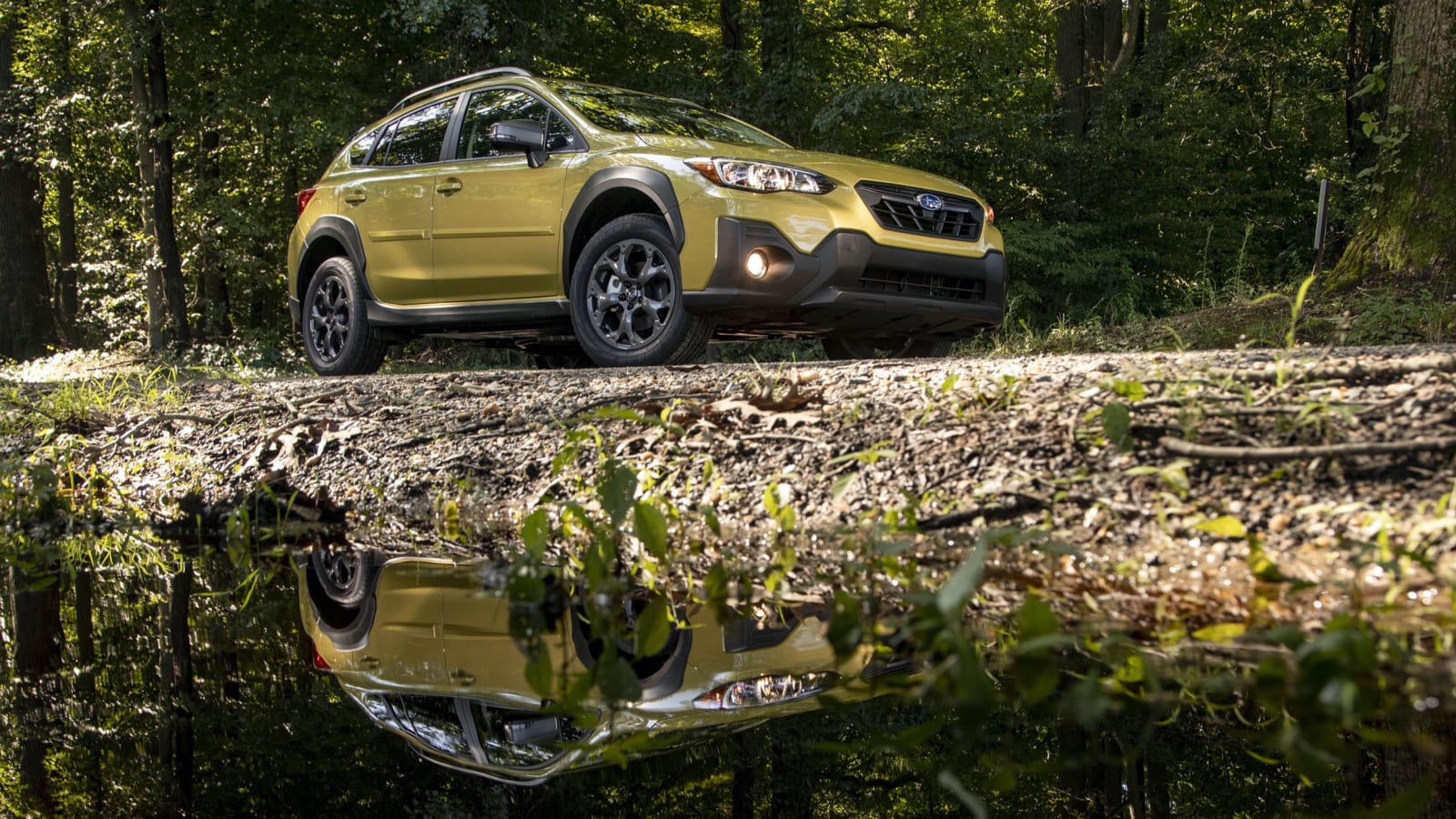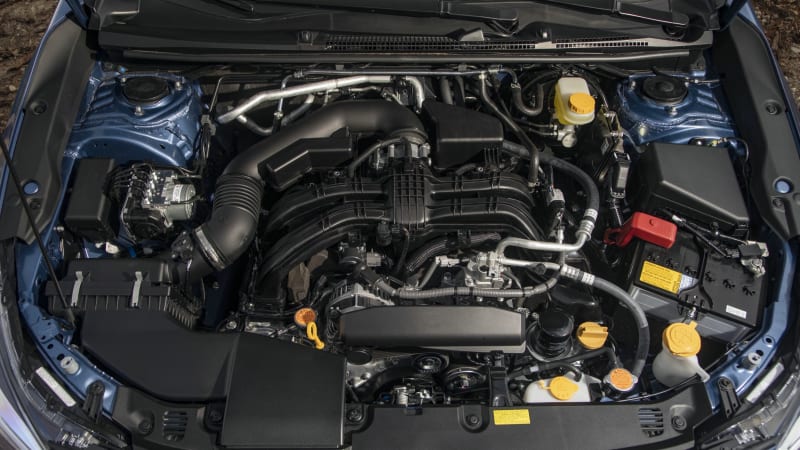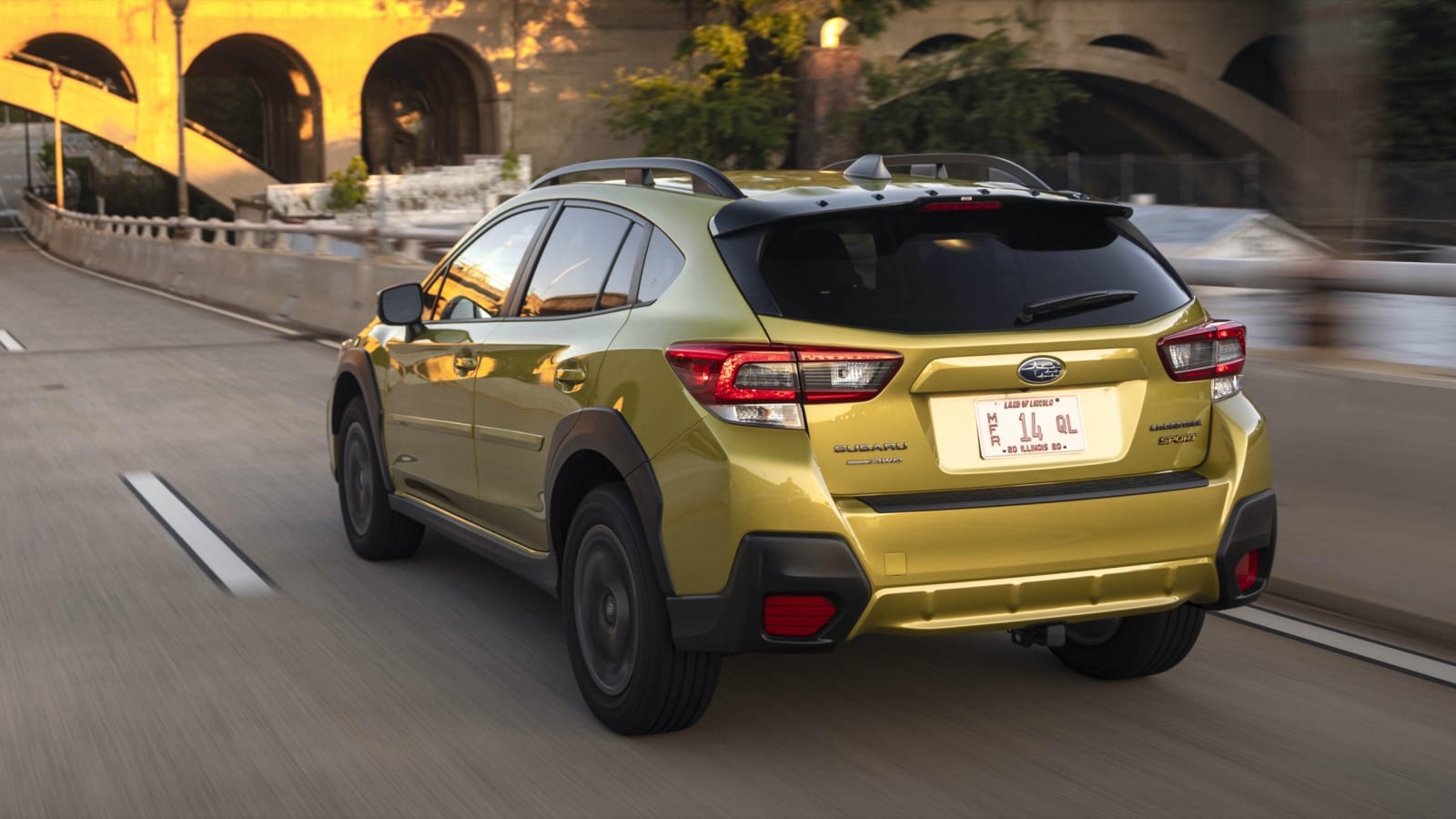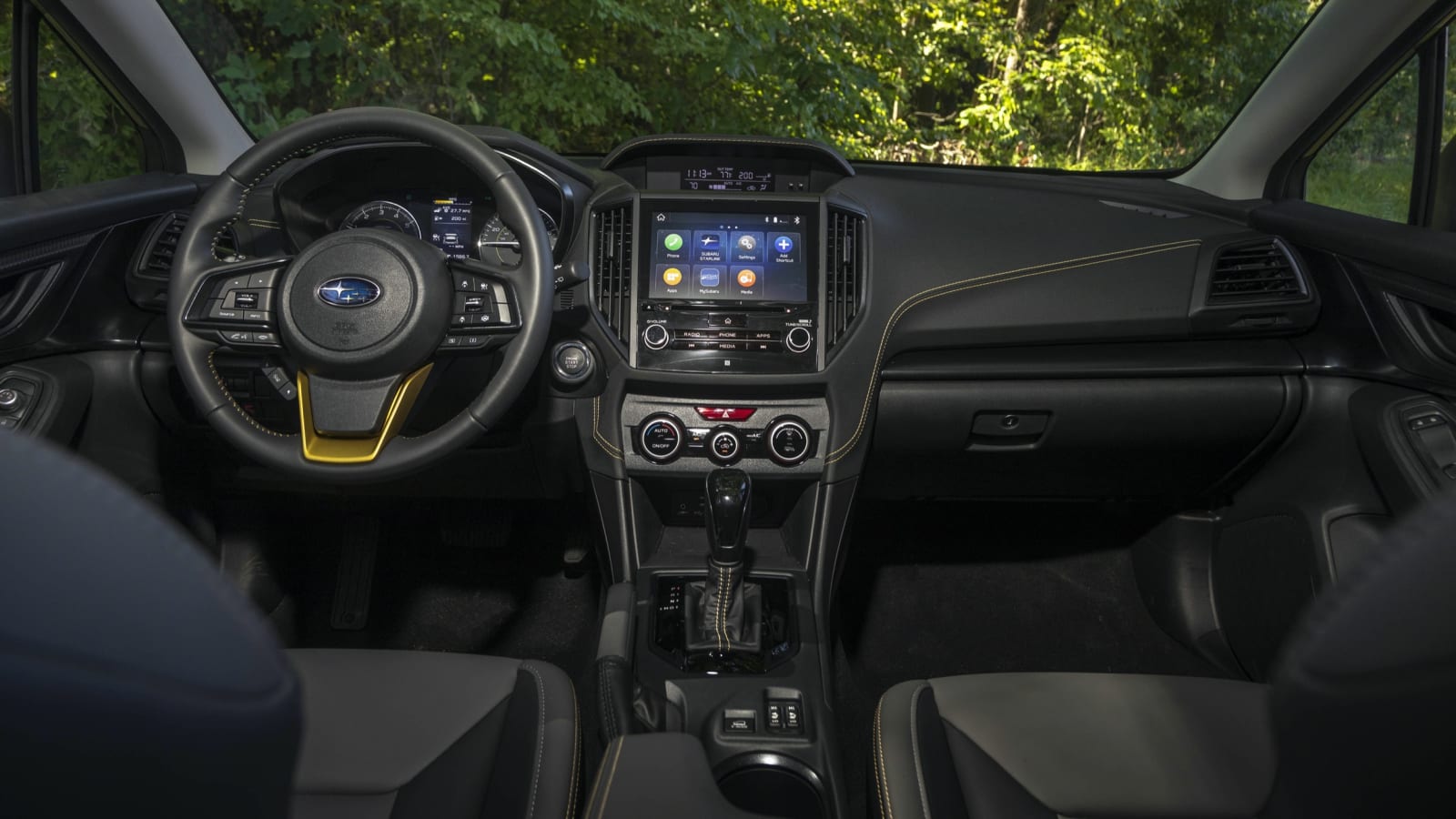BERLIN, Ohio — If horsepower is good, then more horsepower must be better. And in the case of the 2021 Subaru Crosstrek, more horsepower comes courtesy of an optional 2.5-liter engine that provides potential buyers with a long-desired alternative to the meager 2.0-liter four-cylinder that remains standard equipment.
Of course, there’s more to the 2021 Crosstrek story than more displacement. There’s a nip here, a tuck there, and the addition of a new Sport trim level. It all adds up to what we think is the best buy in its segment. And that’s saying something, considering that the number of subcompact crossover choices has grown exponentially since the Crosstrek went on sale for the 2013 model year.
It’s important to note that the larger engine only comes with the Crosstrek’s top two trim levels: Sport and Limited. Base and Premium models soldier on with the same 152-horsepower 2.0-liter engine that all 2020 Crosstreks were equipped with. And, if you want a six-speed manual transmission, which comes standard on base and Premium trims, you’re stuck with the smaller engine since the 2.5-liter sends its 182 horses and 176 pound-feet of torque solely to a continuously variable transmission. As you’d expect from Subaru, the Crosstrek comes standard with all-wheel drive.
For a closer look at the differences between the Sport and Limited trim levels, check out the video just below.
Up front, the Crosstrek gets a new grille, bumper and foglight covers. It’s a subtle update, but we think the ’21 model looks a bit more aggressive than the version it replaces. The new-for-2021 Sport trim level goes even further with unique neon yellow badges, plus a gunmetal finish for the grille, wheels, side mirror caps and badges. Sport models also have different wheel arch moldings, but they aren’t hiding any changes to the suspension.


Inside, the Sport gets unique StarTex vinyl upholstery that is completely free of any animal-derived materials (though the steering wheel is still swathed in leather) and yellow stitching to go along with darker trim and faux carbon fiber accents. Yellow metallic highlights also feature in the gauge cluster. We found the StarTex interior to be pretty nice. We wouldn’t mistake it for leather, but it’s soft to the touch while still feeling grippy enough that occupants don’t slide around too much, even though the seats don’t feature significant bolstering.
Besides the visuals, the one noteworthy addition to the Crosstrek Sport unavailable on other trim levels is an enhanced Dual-mode X-MODE. This more advanced system controls the all-wheel-drive system and adds two additional driver-selectable modes: SNOW/DIRT and DEEP SNOW/MUD. The most logical competitors in the subcompact crossover segment that can lay claim to similar off-road tech are the Jeep Renegade and its larger Compass sibling. And for those keeping track, the Subie’s 8.7 inches of ground clearance matches the Renegade Trailhawk and beats the Compass by half an inch.
Now, none of this means that the Crosstrek is an ideal off-road vehicle. It lacks a low-range transfer case and it doesn’t have any real underbody protection, so a rock crawler it most certainly is not. That said, we traversed plenty of hairy dirt roads over the course of our drive in the 2021 Crosstrek, and it never put a wheel out of place. Standard all-wheel drive, ample clearance and access to suitable driving modes — including hill descent control — lends the driver an air of confidence that most of the competition lacks.
Unlike most other crossovers, the Crosstrek may actually get a chance to put its off-road skills to the test. Subaru’s internal data suggests that Crosstrek owners are more likely to drive their little utility vehicles off the beaten path than any others, including Renegade buyers. They are also more likely to haul kayaks or mountain bikes on its roof, pack it full of camping, hiking or fishing gear, or even customize it for further adventure-ability. Our editors out in the Crosstrek-loving Pacific Northwest can definitely confirm that internal data.



Subaru says Crosstreks equipped with the 2.5-liter engine can do 0-60 in a respectable 8.2 seconds, and that’s with a driver, a passenger and a dog onboard (Great Dane or Chihuahua? Subaru didn’t specify). The 2.0-liter version is a second and a half slower to 60, but it feels even more sluggish since its CVT keeps its revs up in an attempt to maximize acceleration.
And, as we said at the outset, that overworked powertrain has been our significant complaint with the Crosstrek since its last redesign for the 2018 model year. It’s also one those Pacific Northwest editors frequently hear from current owners or friends who bought something else. They’ve generally been in agreement with Autoblog News Editor Joel Stocksdale who wrote in our first drive review that it “takes an agonizingly long time to get up to speed. There were a number of overtaking episodes on two-lane roads during the test drive, and each was a nerve-wracking experience. Even with the foot to the floor, the Crosstrek took the tortoise’s approach to forward momentum, and I was constantly fearful of a hare coming up the other lane.”
That’s no longer an issue. Instead of the turbo that we suggested back in 2018, Subaru has instead gifted the Crosstrek with an additional half liter of displacement. That 30-horsepower increase doesn’t remotely turn the Crosstrek into a rocketship, but it does slide this 3,300-pound vehicle up the scale from underpowered to properly powered. Passing maneuvers no longer elicit panic, and freeway onramps don’t immediately send the engine to dronesville.
The bigger engine doesn’t even have a noticeable effect on fuel efficiency. CVT-equipped 2.0-liter Crosstreks get EPA ratings of 28 mpg city, 33 mpg highway and 30 mpg combined. The larger 2.5 gets 27/34/29. So, one less in the city and combined, but actually an MPG better on the highway, likely due to altered transmission gearing and final drive ratio. The few shift-for-yourselfers who choose the six-speed manual fare far worse with EPA ratings of 22/29/25.

Really, the added power was all the Crosstrek needed. It rides well, with good comfort from what feels like greater suspension travel than small CUVs like the Honda HR-V and Toyota C-HR. There’s a noticeable amount of body roll in quick transitions, but in this class of vehicle that’s a reasonable tradeoff for big-bump cushiness.
The Crosstrek’s steering is par for the small crossover course, which is to say a little overboosted and numb. We appreciate the quick 13:1 steering ratio that makes the car feel nimble and quick to change direction with a light flick of the wrists. Drivers with sporty intentions may also appreciate the steering wheel-mounted paddle shifters on Premium, Sport and Limited trim levels. There aren’t any actual gear changes happening from the CVT, but they do lock the transmission into eight predetermined virtual gears, which is nice when setting up for a winding road or when you want to use engine braking down long downhill grades.
Subaru officially lists front legroom at 43.1 inches and rear legroom at 36.5 inches. That would put it above the little C-HR and between the reasonably sized Renegade and spacious HR-V. In the real world, there’s plenty of space for four 6-foot-tall passengers. There’s 20.8 cubic feet of cargo space behind the rear seats and 55.3 with those seats folded. That’s better than the Renegade and C-HR, but again behind the HR-V. Fortunately, the cargo area is easily accessible, without any odd angles or shapes that would make packing more of a chore than it has to be.
Crosstreks with the automatic transmission get Subaru’s EyeSight Driver Assist Technology package standard. For 2021, it adds adaptive cruise and lane centering to its previous suite of technologies that includes automatic emergency braking and lane departure prevention. Unfortunately, only the Limited gets standard automatic high-beams, automatic reverse braking, blind-spot warning and rear cross-traffic alert.

The 2021 Crosstrek starts at $23,295, including the $1,050 destination charge. Adding the CVT brings the price to $24,645. That represents a reasonable $100 increase over the 2020 model, and it includes a 6.5-inch touchscreen with Apple CarPlay and Android Auto plus proximity entry and automatic climate control. The Premium trim adds about a grand to the price and includes heated seats and an upgraded six-speaker sound system, while the new Sport trim, which comes standard with the 2.5-liter engine, runs $27,690. The top level Limited costs $29,045 and gets unique 18-inch wheels, leather upholstery, adaptive LED headlights and the larger 8.0-inch screen that is otherwise optional on other trims (and definitely recommended).
There wasn’t much wrong with the Subaru Crosstrek that couldn’t be rectified by an injection of 30 additional ponies. That being the case, we’d recommend that buyers stretch their budgets far enough to opt for the Sport or Limited trim levels if at all possible. The bigger engine makes that big of a difference. It transforms the Crosstrek from a must-drive in the segment to one that’s much easier to actually take home.
Related Video:

